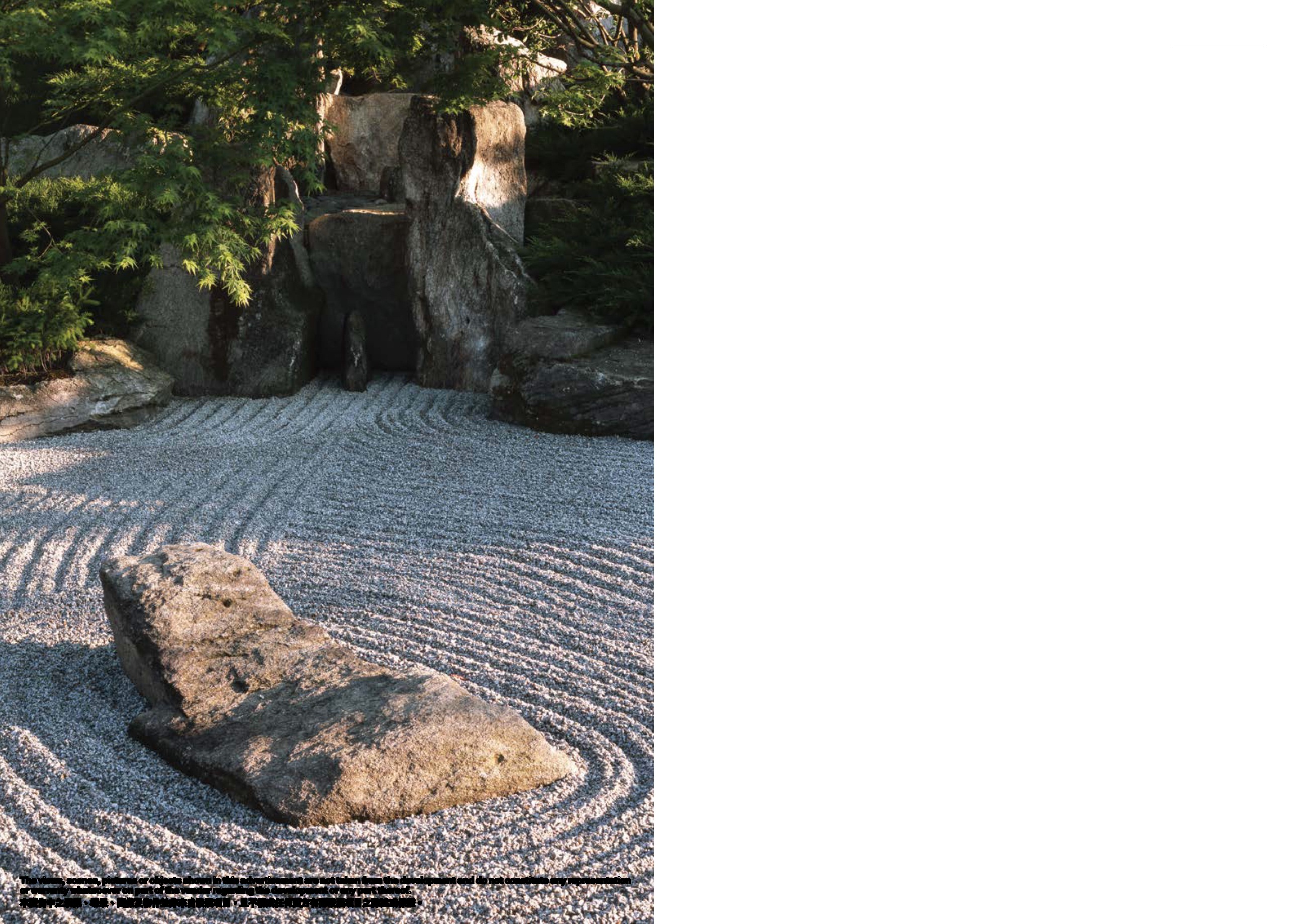
T H E PAV I L I A H I L L
1 3
1 2
S E T T I NG S TON E S
The views, scenes, pictures or objects shown in this advertisement are not taken from the development and do not constitute any representation
or warranty whatsoever on part of the vendor regarding the development or any part thereof.
本廣告中之景觀、場景、圖像及物件並非來自發展項目,且不構成任何賣方有關發展項目之陳述或保證。
A B O U T T H E Z E N G A R D E N
At the end of the 11th century, the Japanese
poet Tachibana no Toshitsuna documented the
creation of Japanese rock garden, or Zen
garden, a miniature landscape comprising
various natural materials – stone, wood,
water – used in carefully curated arrangements.
Contemporary Zen gardens – the type that
Masuno creates – are now as likely to be found
in urban context as they are in traditional
locations. The Zen garden’s purpose is clear:
to imitate the essence of nature, not its actual
appearance, and to create spaces that foster
meditation. The Zen garden allows visitors
to achieve a sense of calm and relaxation by
offering a tranquil escape from the stresses and
strains of contemporary life.
十一世紀末,日本詩人
Tachibana no Toshitsuna
記
載了被後世稱為枯山水(
Zen Garden
)的創意概念,
即一個糅合山石、植物、流水等自然元素而精心設計
的小型庭園。而
Shunmyo Masuno
創造的現代
Zen
Garden
已不再局限於傳統地區,亦可見於都市中。
Zen Garden
的理念十分明確,即設計師致力展現大自
然的本源之美,建造一個靜思、冥想的空間,令置身其
中的人能感受到徹底的放鬆與平靜,忘卻都市生活的緊
張壓力。


